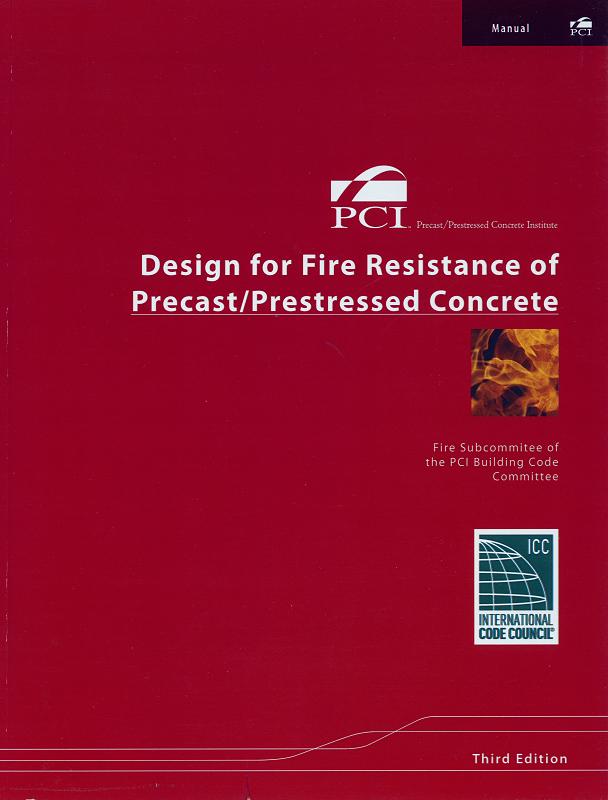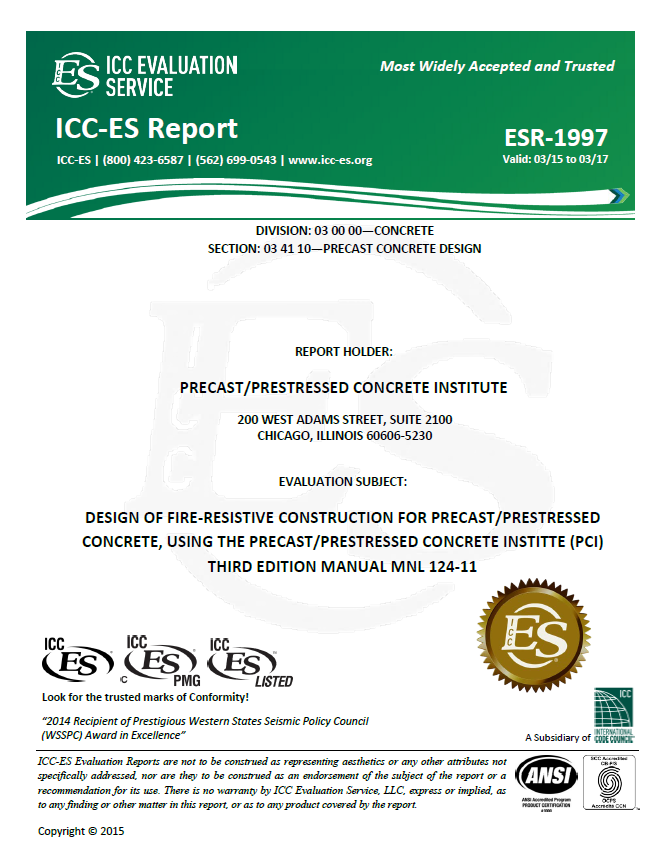Design for Fire Resistance
There are two primary considerations in designing structural elements for fire resistance. The elements must have enough mass to limit the rise in temperature on the side opposite of a fire. The measure is known as the heat transmission endpoint. The elements must have sufficient strength to prevent collapse in the elevated temperatures of a fire. This measure is known as structural endpoint.
Heat transmission endpoint is dictated by the type of concrete in the element and the thickness of the element. Structural endpoint is mostly a function of the temperature of the reinforcement within the element at the end of the required fire resistance duration. This temperature is controlled by adjusting the amount of concrete cover between the fire and the reinforcement.
The International Building Code (IBC) allows a number of approaches to fire design and includes prescriptive deemed to satisfy criteria. Therefore, the IBC provides relatively simple and universally accepted fire design criteria. PCI publishes MNL 124, Design for Fire Resistance of Precast Prestressed Concrete to explain many of the criteria included in the IBC; and also to provide an alternate design approach commonly referred to as rational design when the prescriptive requirements of the IBC cannot be met. MNL 124 holds an ICC Evaluation Service report ESR-1997 that allows its use under the 2006 IBC.


The following table shows an example of information available for fire design. This table provides the thickness of concrete required to provide various fire resistance ratings based on the heat transmission endpoint. These thicknesses apply to both solid slabs and solid walls. Note that the type of concrete has an influence on the required thickness.
Rational design requires the determination of temperature within a concrete member at the location of the steel reinforcement. Steel strength is reduced at elevated temperatures. Based on the steel temperature and strength loss, the structural capacity of an element can be calculated. As long as the calculated capacity is greater than the load demand during a fire, the element will be acceptable. The figures below are from MNL 124 with one indicating isotherms within a beam and the other indicating strength loss of steel with elevated temperatures.
Beyond prescriptive fire design, there are numerous considerations for various conditions. Most of the work on fire was done in the 1960’s and 1970’s and many references are available in the archives. Several papers have been published in the PCI Journal over the years. A few of the more recent papers are listed below.